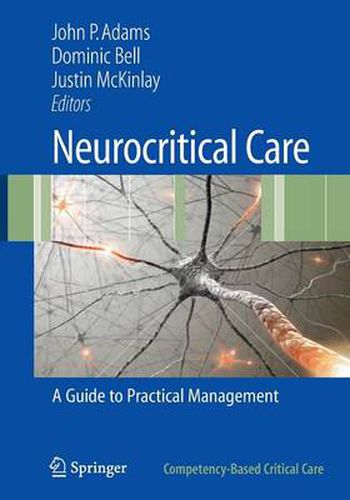Readings Newsletter
Become a Readings Member to make your shopping experience even easier.
Sign in or sign up for free!
You’re not far away from qualifying for FREE standard shipping within Australia
You’ve qualified for FREE standard shipping within Australia
The cart is loading…






This title is printed to order. This book may have been self-published. If so, we cannot guarantee the quality of the content. In the main most books will have gone through the editing process however some may not. We therefore suggest that you be aware of this before ordering this book. If in doubt check either the author or publisher’s details as we are unable to accept any returns unless they are faulty. Please contact us if you have any questions.
Brain injury is a worldwide leading cause of mortality and morbidity and requires early and appropriate management to minimize these adverse sequelae. Despite such needs, access to specialist centers is limited, forcing both immediate and secondary care of these patients onto generalist staff. These responsibilities are made more problematical by differences in patient management between and even within specialist centers, due in part to an insuffcient evidence-base for many interventions directed at brain injury. This book is borne out of the above observations and is targeted at em- gency and acute medicine, anesthetic and general intensive care staff caring for brain injury of diverse etiology, or surgical teams responsible for the inpatient care of minor to moderate head trauma. Although explaining the various facets of specialist care, the book is not intended to compete with texts directed at neurosciences staff, but aims to advise on optimal care in general hospitals, including criteria for transfer, by a combination of narrative on pathophysiology, principles of care, templates for documentation, and highly specifc algorithms for particular problems. It is intended that the content and structure can form the basis of guidelines and protocols that refect the needs of individual units and that can be constantly refned. Our ultimate goal is to promote informed, consistent, auditable, multidisciplinary care for this cohort of patients and we hope that this text contributes to that process.
$9.00 standard shipping within Australia
FREE standard shipping within Australia for orders over $100.00
Express & International shipping calculated at checkout
Stock availability can be subject to change without notice. We recommend calling the shop or contacting our online team to check availability of low stock items. Please see our Shopping Online page for more details.
This title is printed to order. This book may have been self-published. If so, we cannot guarantee the quality of the content. In the main most books will have gone through the editing process however some may not. We therefore suggest that you be aware of this before ordering this book. If in doubt check either the author or publisher’s details as we are unable to accept any returns unless they are faulty. Please contact us if you have any questions.
Brain injury is a worldwide leading cause of mortality and morbidity and requires early and appropriate management to minimize these adverse sequelae. Despite such needs, access to specialist centers is limited, forcing both immediate and secondary care of these patients onto generalist staff. These responsibilities are made more problematical by differences in patient management between and even within specialist centers, due in part to an insuffcient evidence-base for many interventions directed at brain injury. This book is borne out of the above observations and is targeted at em- gency and acute medicine, anesthetic and general intensive care staff caring for brain injury of diverse etiology, or surgical teams responsible for the inpatient care of minor to moderate head trauma. Although explaining the various facets of specialist care, the book is not intended to compete with texts directed at neurosciences staff, but aims to advise on optimal care in general hospitals, including criteria for transfer, by a combination of narrative on pathophysiology, principles of care, templates for documentation, and highly specifc algorithms for particular problems. It is intended that the content and structure can form the basis of guidelines and protocols that refect the needs of individual units and that can be constantly refned. Our ultimate goal is to promote informed, consistent, auditable, multidisciplinary care for this cohort of patients and we hope that this text contributes to that process.